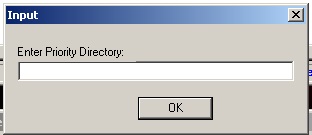Ransom.MSIL.KARSOVROP.A
UDS:Trojan-Ransom.MSIL.Encoder.gen (KASPERSKY)
Windows


Threat Type: Ransomware
Destructiveness: No
Encrypted: No
In the wild: Yes
OVERVIEW
Downloaded from the Internet, Dropped by other malware
This Ransomware arrives on a system as a file dropped by other malware or as a file downloaded unknowingly by users when visiting malicious sites.
It drops files as ransom note. It avoids encrypting files with the following file extensions.
TECHNICAL DETAILS
28,609 bytes
EXE
No
02 Jan 2024
Drops files, Terminates processes, Encrypts files
Arrival Details
This Ransomware arrives on a system as a file dropped by other malware or as a file downloaded unknowingly by users when visiting malicious sites.
Installation
This Ransomware adds the following processes:
- "cmd.exe" /c net stop wscsvc
- "%System%\vssadmin.exe" delete shadows /all /quite
- "cmd.exe" /c {Malware File Path}\DeleteItself.bat
(Note: %System% is the Windows system folder, where it usually is C:\Windows\System32 on all Windows operating system versions.)
Process Termination
This Ransomware terminates the following processes if found running in the affected system's memory:
- agntsvc
- dbeng50
- dbsnmp
- encsvc
- excel
- firefoxconfig
- infopath
- isqlplussvc
- msaccess
- msftesql
- mspub
- mydesktopqos
- mydesktopservice
- mysqld
- mysqld-nt
- mysqld-opt
- ocautoupds
- ocomm
- ocssd
- onenote
- oracle
- outlook
- powerpnt
- sqbcoreservice
- sqlagent
- sqlbrowser
- sqlservr
- sqlwriter
- steam
- synctime
- tbirdconfig
- thebat
- thebat64
- thunderbird
- visio
- winword
- wordpad
- xfssvccon
- Any process whose image path does not start in %System Root%
- Any process whose image path does not contain "microsoft" or "windows" (case-insensitive)
(Note: %System Root% is the Windows root folder, where it usually is C:\ on all Windows operating system versions.)
Dropping Routine
This Ransomware drops the following files:
- {Encrypted Path}\{Encrypted File Name}.{Encrypted File Extension}.karsovrop_TMP → deleted after the file is encrypted
- {Malware File Path}\DeleteItself.bat → used to delete the malware (deleted afterwards)
Other Details
This Ransomware does the following:
- It will only execute if the system date is after the 15th of every month from the year 2024 onwards.
- It avoids encrypting files that contains the following strings at the end of their filenames:
- FILE RECOVERY.txt
- It shows the following dialog box which accepts the path/directory to prioritize in encrypting:

Ransomware Routine
This Ransomware avoids encrypting files with the following strings in their file name:
- autorun.inf
- boot.ini
- Bootfont.bin
- bootsect.bak
- concache.db
- DECRYPT-FILES.html
- desktop.ini
- io.sys
- ntdetect.com
- ntldr
- ntuser.dat
- ntuser.dat.log
- readme-warning.txt
- thumbs.db
It avoids encrypting files found in the following folders:
- $windows.~bt
- $windows.~ws
- appdata
- application data
- Assemblies
- boot
- Common Files
- Core Runtime
- intel
- Internet Explorer
- Microsoft Analysis Services
- Microsoft ASP.NET
- Microsoft Help Viewer
- Microsoft MPI
- Microsoft Security Client
- Microsoft Security Client
- Microsoft.NET
- mozilla
- msocache
- Package
- Package Store
- perflogs
- programdata
- Reference
- Store
- system volume information
- tor browser
- Windows
- Windows Defender
- Windows Kits
- Windows Mail
- Windows Microsoft.NET
- Windows NT
- Windows Photo Viewer
- Windows Portable Devices
- Windows Sidebar
- windows.old
- WindowsPowerShell
It appends the following extension to the file name of the encrypted files:
- .karsovrop
It drops the following file(s) as ransom note:
- {Discovered Path}\FILE RECOVERY.txt

It avoids encrypting files with the following file extensions:
- .386
- .adv
- .ani
- .bat
- .bin
- .cab
- .cmd
- .com
- .cpl
- .cur
- .deskthemepack
- .diagcab
- .diagpkg
- .dll
- .drv
- .exe
- .hlp
- .hta
- .icl
- .icns
- .ico
- .ics
- .idx
- .jar
- .karsovrop
- .karsovrop_TMP
- .lnk
- .mod
- .mpa
- .msc
- .msi
- .msp
- .msstyles
- .msu
- .nls
- .nomedia
- .ocs
- .prf
- .ps1
- .rom
- .rtp
- .scr
- .shs
- .sys
- .theme
- .themepack
- .wpx
SOLUTION
9.800
18.920.04
04 Jan 2024
18.921.00
05 Jan 2024
Step 1
Trend Micro Predictive Machine Learning detects and blocks malware at the first sign of its existence, before it executes on your system. When enabled, your Trend Micro product detects this malware under the following machine learning name:
- TROJ.Win32.TRX.XXPE50FFF075
Step 2
Before doing any scans, Windows 7, Windows 8, Windows 8.1, and Windows 10 users must disable System Restore to allow full scanning of their computers.
Step 3
Note that not all files, folders, and registry keys and entries are installed on your computer during this malware's/spyware's/grayware's execution. This may be due to incomplete installation or other operating system conditions. If you do not find the same files/folders/registry information, please proceed to the next step.
Step 4
Search and delete these files
- {Encrypted Path}\{Encrypted File Name}.{Encrypted File Extension}.karsovrop_TMP
- {Malware File Path}\DeleteItself.bat
Step 5
Scan your computer with your Trend Micro product to delete files detected as Ransom.MSIL.KARSOVROP.A. If the detected files have already been cleaned, deleted, or quarantined by your Trend Micro product, no further step is required. You may opt to simply delete the quarantined files. Please check the following Trend Micro Support pages for more information:
Step 6
Restore encrypted files from backup.
Did this description help? Tell us how we did.

